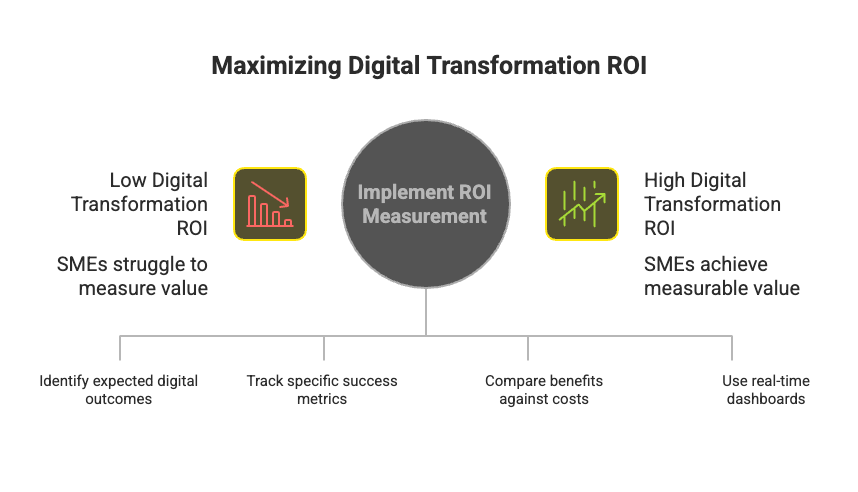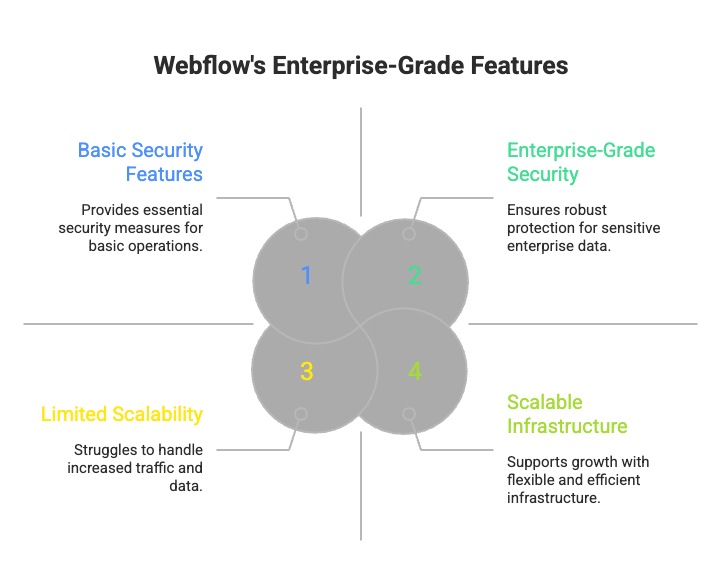In today’s digital-first world, user experience (UX) has become a critical driver of business success. As industries across Hong Kong and the Asia-Pacific region undergo rapid digital transformation, businesses are realizing that adopting new technologies isn't enough. The key to digital success lies in delivering seamless, intuitive, and meaningful experiences for users.
At RMD HK, we specialize in helping businesses prioritize UX as a cornerstone of their digital transformation strategies. This blog explores why UX is essential for digital transformation success, how it impacts customer satisfaction and ROI, and actionable steps businesses can take to enhance their UX design.
What is User Experience (UX), and Why Does It Matter?
User experience (UX) refers to how users interact with and perceive a digital product, such as a website, application, or system. UX encompasses usability, accessibility, design, and functionality—key aspects that determine whether a digital solution meets user needs effectively.
In the context of digital transformation, UX ensures that new technologies and systems are not only functional but also intuitive and enjoyable to use.
Why UX is Crucial for Digital Transformation
- Customer Expectations Are High
The modern consumer demands personalized, seamless, and efficient experiences across all digital touchpoints. Poor UX can lead to frustration, abandonment, and a decline in customer loyalty. - Technology Alone Isn’t Enough
Even the most advanced technology can fail if users struggle to navigate or understand it. UX bridges the gap between technological innovation and user adoption. - Competitive Advantage
In a market as dynamic as Hong Kong, where competitors are just a click away, superior UX can set a brand apart.
The Impact of UX on Digital Transformation Success
1. Enhanced Customer Satisfaction and Retention
A well-designed user experience fosters trust and satisfaction, encouraging repeat engagement. Businesses that prioritize UX are more likely to build loyal customer bases.
Example:
A Hong Kong-based e-commerce retailer redesigned its mobile app to improve navigation and simplify the checkout process. The result? A 30% increase in repeat purchases and a significant reduction in cart abandonment rates.
2. Increased Engagement and Conversions
Good UX design captures user attention and encourages engagement. Whether it’s a website, app, or internal system, intuitive interfaces lead to higher interaction rates and conversions.
Example:
A financial services company in Hong Kong integrated a chatbot with a user-friendly interface into its website. This improved customer engagement by 40% and reduced service response time by half.
3. Improved ROI for Digital Initiatives
Investing in UX design pays off. By reducing friction points and improving usability, businesses can increase revenue while lowering costs associated with customer support and troubleshooting.
Data Insight:
According to a study by Forrester, every $1 invested in UX design returns $100 in ROI, making it one of the most cost-effective strategies for digital transformation success.
Key Elements of Effective UX in Digital Transformation
To ensure digital transformation initiatives succeed, businesses must focus on the following core elements of UX design:
1. Usability
Ensure your digital solutions are easy to use and navigate. Test interfaces thoroughly to identify and eliminate pain points.
2. Accessibility
Make digital platforms inclusive for all users, including those with disabilities. Implement features like text-to-speech, keyboard navigation, and color contrast optimization.
3. Personalization
Use data analytics and AI-powered tools to deliver personalized experiences based on user preferences and behavior.
4. Speed and Performance
Optimize websites and applications for fast loading times and smooth performance, especially on mobile devices.
5. Visual Design
Aesthetics matter. Use clean, modern designs that align with your brand identity and resonate with users.
Real-World Case Study: UX-Driven Digital Transformation
Client: A mid-sized logistics company in Hong Kong.
Challenge: The company’s outdated internal system was inefficient and difficult for employees to use, leading to errors and delays.
Solution:
- Conducted a UX audit to identify pain points.
- Redesigned the system interface with a focus on usability and accessibility.
- Integrated automated workflows to reduce manual input.
Outcome: - 40% increase in employee productivity.
- 30% reduction in errors.
- High employee satisfaction with the new system, leading to smoother operations.
How to Prioritize UX in Your Digital Transformation Strategy
1. Start with UX Research
Understand your users before designing solutions. Use methods like surveys, focus groups, and usability testing to gather insights into user needs, behaviors, and pain points.
Visual Suggestion:
Include an infographic showing the UX research process, from identifying user personas to conducting usability tests.
2. Adopt Low-Code Platforms for Flexibility
Low-code platforms like Webflow allow businesses to build and iterate on UX designs quickly. These tools empower teams to test and refine user interfaces without extensive development time.
Example:
A Hong Kong startup used Webflow to create a prototype of its mobile application, iterating on user feedback in real time. This reduced development time by 50% and resulted in a highly functional app that users loved.
3. Continuously Test and Optimize
UX is not a one-time effort. Regularly test your digital platforms to identify areas for improvement and adjust based on user feedback.
Tools for UX Testing:
- PostHog: Tracks user interactions to identify friction points.
- Google Analytics: Analyzes user behavior and engagement metrics.
- Figma: Enables collaborative prototyping and design iterations.
4. Train Your Team in UX Best Practices
Empower employees with the knowledge and tools to prioritize UX in their workflows. From customer support to development teams, everyone should understand the value of user-centered design.
Actionable Tip:
Host workshops or partner with a UX-focused agency like RMD HK to upskill your team.
5. Partner with UX Experts
For complex projects, working with experienced UX professionals can ensure your digital transformation initiatives deliver meaningful results.
At RMD HK, we combine innovation, expertise, and market insights to design UX solutions tailored to the needs of businesses in Hong Kong and APAC.
FAQs: UX and Digital Transformation
Why is UX important for digital transformation?
UX ensures that new technologies and systems are intuitive, accessible, and user-friendly, driving higher adoption rates, customer satisfaction, and ROI.
How can I measure the success of UX design?
Track metrics like user engagement, conversion rates, task completion time, and user satisfaction scores. These indicators provide insights into the effectiveness of your UX design.
What tools can help improve UX?
Tools like Webflow, Figma, and PostHog are excellent for designing, testing, and analyzing user experiences.
Can UX impact employee productivity?
Absolutely. Intuitive internal systems reduce errors, save time, and improve employee satisfaction, leading to greater productivity.
Why Choose RMD HK for UX-Driven Digital Transformation?
At RMD HK, we understand that UX is the foundation of successful digital transformation. Located in Hong Kong Science Park, we specialize in creating low-code and high-code solutions that prioritize user-centric design.
What We Offer:
- UX Audits: Identify pain points and opportunities for improvement.
- Custom Solutions: Design intuitive websites, apps, and systems tailored to your needs.
- Continuous Optimization: Monitor and refine UX designs for ongoing success.
- Regional Expertise: With a deep understanding of the Hong Kong and APAC markets, we deliver solutions that resonate with local audiences.
Final Thoughts
In the era of digital transformation, UX is no longer optional—it’s a necessity. Businesses that prioritize UX in their strategies are better equipped to meet customer expectations, drive engagement, and achieve sustainable growth.

%20in%20Digital%20Transformation%20Success%20-%20visual%20selection.png)


